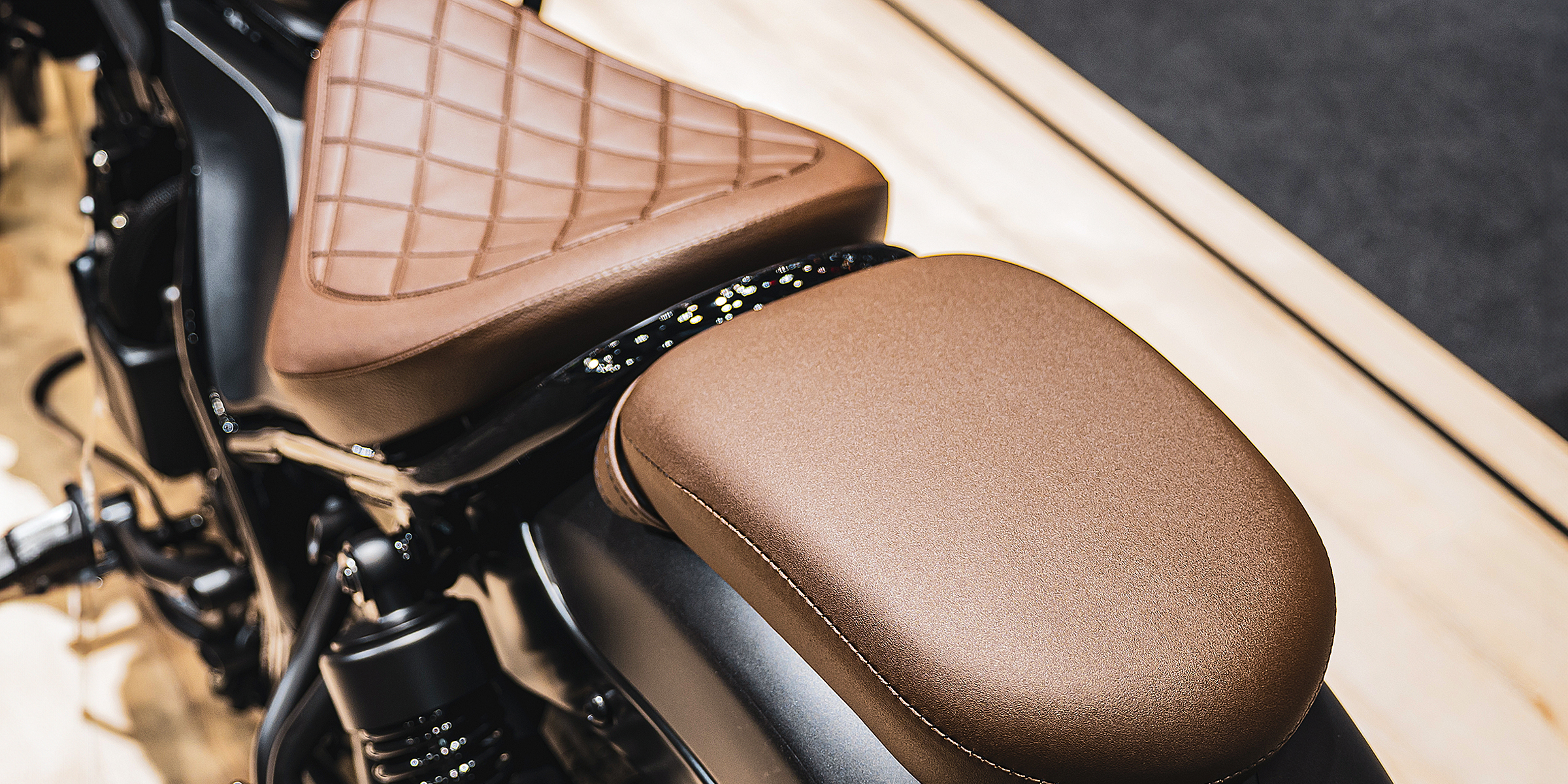
How to Make a Motorcycle Seat— A Step-by-Step Guide for Custom Comfort
Learning how to make a motorcycle seat can be immensely rewarding. With the right supplies, tools, and dedication, mastering the craft of creating your own seat is within reach.
If your motorcycle's seat has seen better days due to damage or discomfort, or if you're itching for a more customized option, it might be time for a replacement. Crafting your own seat offers the opportunity for personalization and satisfaction that off-the-shelf options may not provide.
While self-adhesive neoprene race seat foam is an alternative, creating your own allows you to tailor every detail to your liking. Let's dive into a step-by-step guide to help you navigate the process smoothly.

A DIY motorcycle seat | Source: YouTube/RustyPhoenixMotors
How to Make a Motorcycle Seat: A Step-by-Step Guide
1. Gather Your Supplies and Tools
Before you start making your motorcycle seat, ensure you have all the necessary supplies and tools.
Supplies and tools:
- Seat cover material
- Interfacing material (backing or Pellon)
- Camping sleep pad foam
- Upholstery thread
- A heavy-duty sewing machine needle
- Sewing machine
- Sharp scissors
- Ruler and/or sewing measuring tape
- Marking utensils (pen, sharpie, upholstery pencil)
- Cutting board and cutter
- Hot glue gun and glue sticks
- Angle grinder with a sanding disk, belt sander, or a similar tool for foam shaping
- Seam ripper
- Staple gun or a flat-bladed screwdriver and hammer (depending on the seat pan type)

Materials for the DIY motorcycle seat. | Source: YouTube/RustyPhoenixMotors
2. Shape the Seat Foam (If Necessary)
- Trace the outline of your seat pan onto the foam material using a marker.
- Cut out multiple layers of foam to achieve your desired height.
- Use a hot glue gun to stack and secure the layers together.
- Shape the foam block using appropriate tools for a smooth and even finish.
- Optionally, apply a layer of backing material over the foam for added smoothness and aesthetics.

Shape the foam block evenly with appropriate tools. | Source: YouTube/RustyPhoenixMotors
3. Take Precise Measurements
- Measure the dimensions of both the seat pan and the shaped foam block.
- Consider any design preferences.
- Remember to leave additional fabric for seam allowances.
- Sketch out a plan for your seat cover and pay attention to how the pieces will fit together.

Measure both the seat pan and the shaped foam block. | Source: YouTube/RustyPhoenixMotors
4. Prototype and Practice
- Before cutting the main fabric, create a prototype with scrap material.
- Experiment with measurements and assembly for a proper fit.
- Familiarize yourself with the sewing machine and materials, anticipate challenges, and refine techniques and adjustments.

Make a prototype with scrap material before cutting the main fabric. | Source: YouTube/RustyPhoenixMotors
5. Lay Out and Cut the Fabric
- Transfer the finalized measurements onto the back of your chosen fabric.
- Be mindful of mirroring patterns for pieces that require it.
- Leave ample extra fabric along the bottom edge of the seat cover for stretching and attachment.

Leave extra fabric at seat cover bottom for stretching and attaching. | Source: YouTube/RustyPhoenixMotors
6. Sew the Seat Cover
- Carefully sew the fabric pieces together, adhering to the planned layout.
- Ensure precise alignment and seam allowances.
- Take your time to achieve accuracy.
- Utilize a seam ripper for adjustments when necessary, especially in areas where multiple fabric pieces converge for alignment.

Stitch fabric pieces together following the planned layout. | Source: YouTube/RustyPhoenixMotors
7. Install the Seat Cover
- For plastic pans: Stretch the cover over the seat pan and secure it with staples or glue.
- For metal pans with spikes: Stretch the material over the pan and secure it by poking the spikes through or using staples.
- Double-check alignment before proceeding and trim any excess fabric for a neat finish.

Check alignment, trim excess fabric for neat finish. | Source: YouTube/RustyPhoenixMotors
8. Revel in Your Handiwork
With your custom motorcycle seat installed, take a moment to appreciate the fruits of your labor. Ride with pride, knowing that you've crafted a unique piece that reflects your individuality and craftsmanship.
Whether you're seeking to address damage or discomfort, or simply craving a more personalized option, crafting your own seat offers the opportunity for satisfaction and customization that off-the-shelf options may not provide.
By following these steps, you can craft a motorcycle seat that surpasses your expectations, enhancing your riding experience with comfort and style. Additionally, if you're keen on further DIY vehicle improvements, consider exploring how to make your own car freshener at home using simple ingredients.
